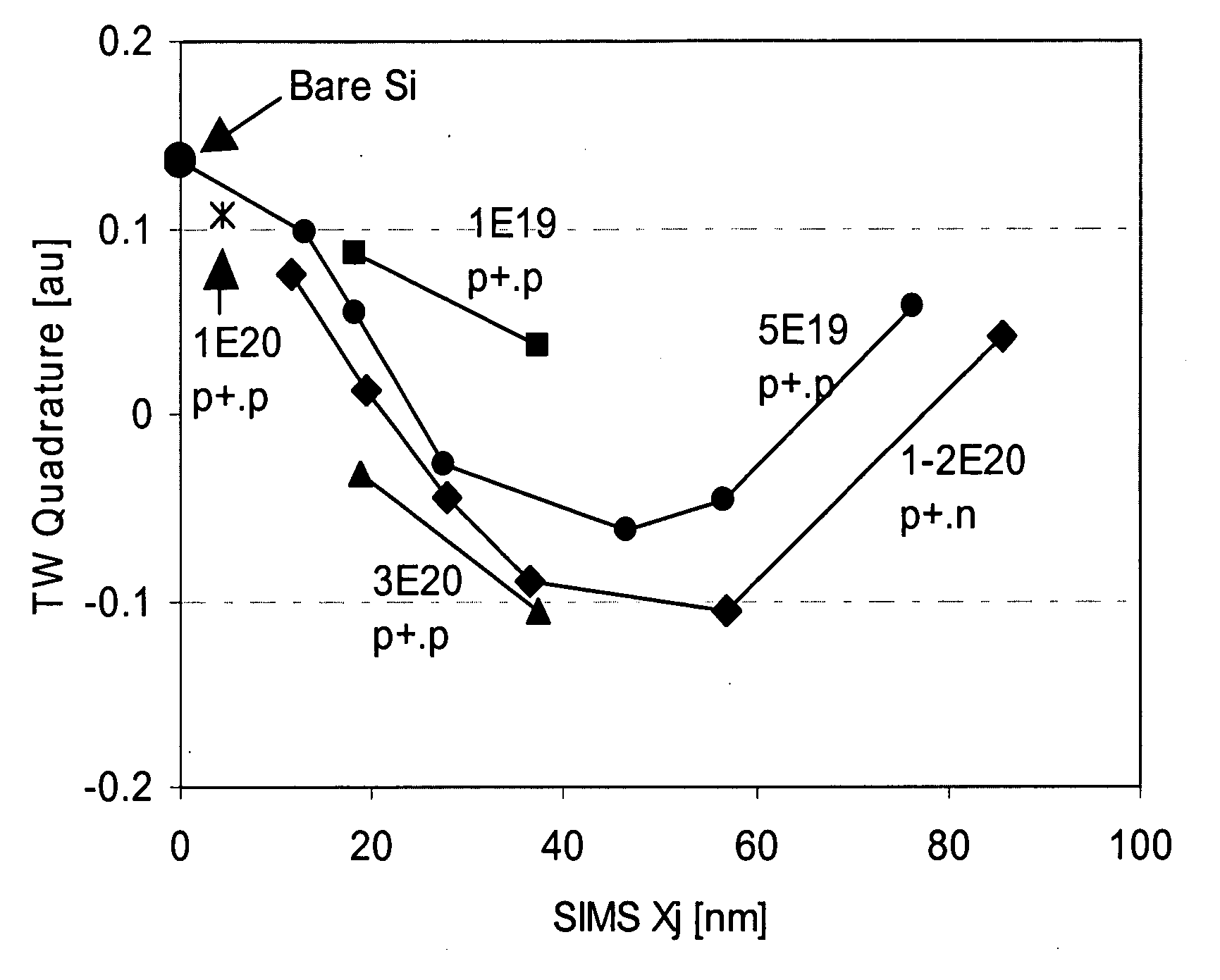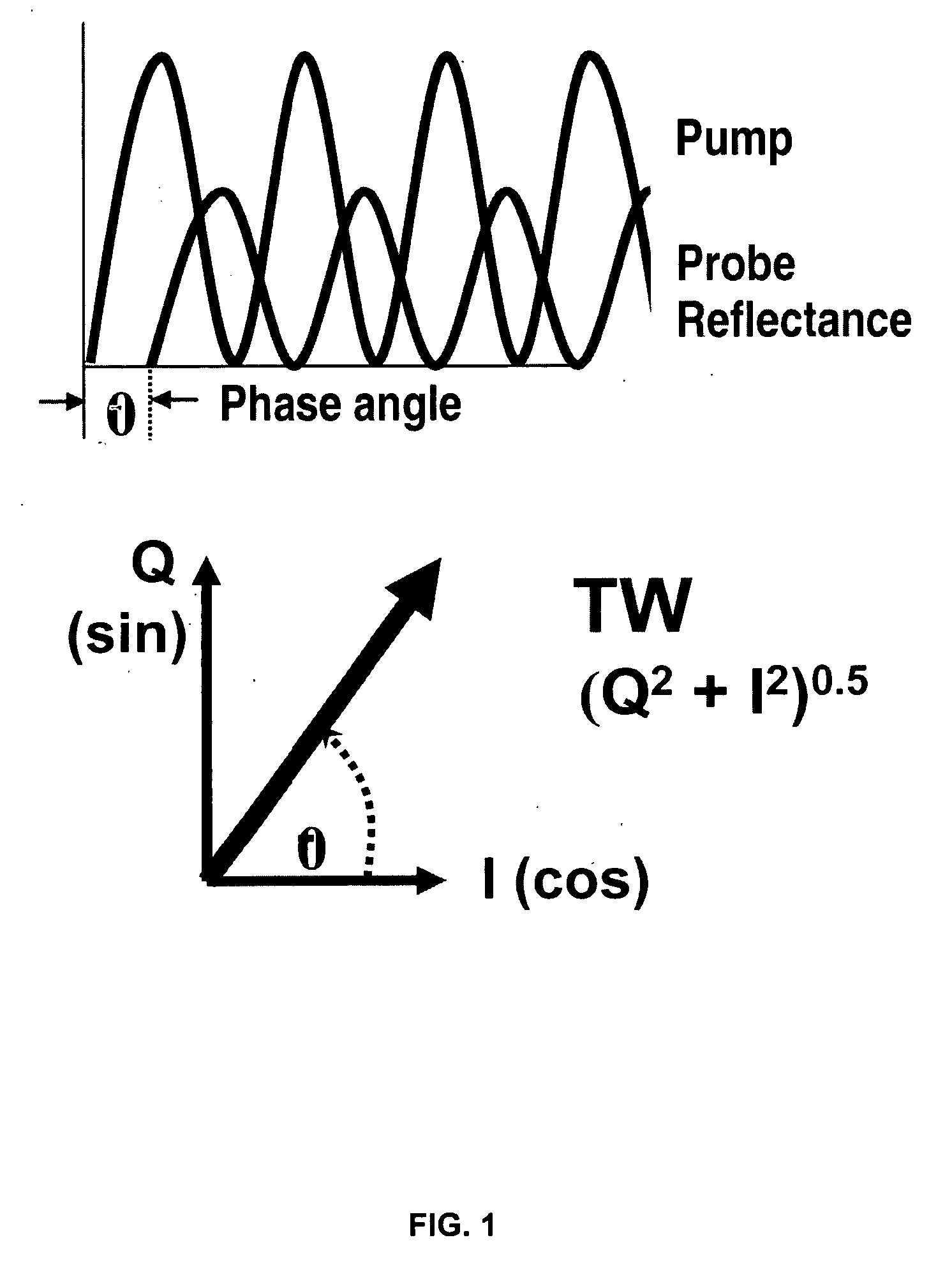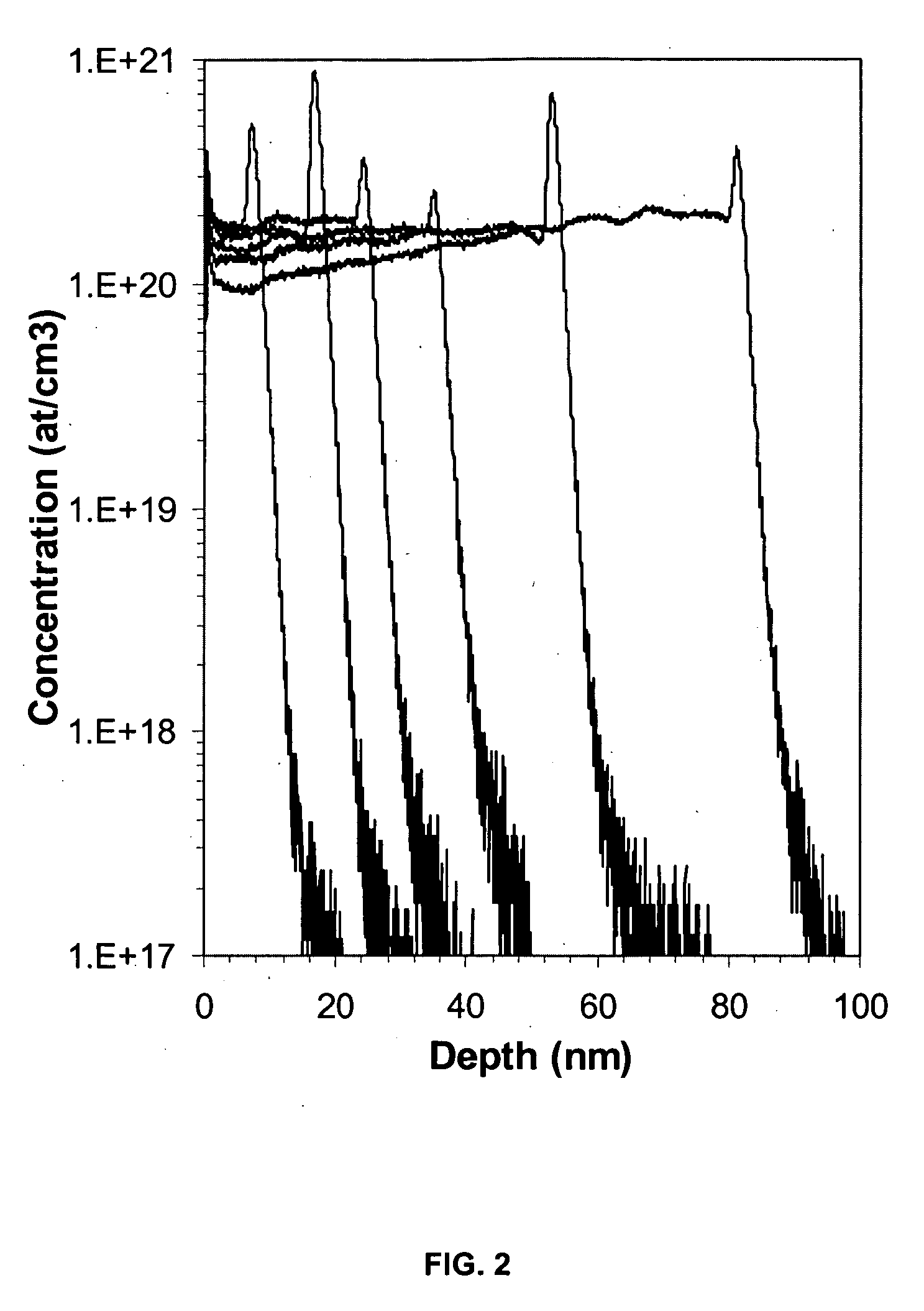Method for measuring peak carrier concentration in ultra-shallow junctions
a peak carrier and ultra-shallow junction technology, applied in the field of optical devices, can solve the problems of large difficulty in locating near the surface with desired carrier concentration, damage that is typically proportional to the implantation, and damage that is not uniform
- Summary
- Abstract
- Description
- Claims
- Application Information
AI Technical Summary
Benefits of technology
Problems solved by technology
Method used
Image
Examples
Embodiment Construction
[0028] The present invention provides a method for simultaneously monitoring the carrier concentration C and (if desirable) USJ junction depth Xj in non-destructive and non-contact manner. For this method, a PMR-like optical metrology tool is used on USJ samples in a manner similar to that described in U.S. Patent Publication No. 2005 / 0083528, cited above. In the latter case, I-Q representation of the measurements are used to monitor implant dose, damage and depth. Here we use similar information to derive carrier concentration.
[0029] The behavior of the quadrature component of the TW signal for different USJ junction depths and peak carrier levels is illustrated in FIG. 4. As can be seen in FIG. 4, these data sets display the expected cosine-like junction depth dependence for fixed doparit level, with a zero value at approximately 24 nm junction depth. Further, it can be seen that the cosine correlation curve for the more highly doped data series is shifted downwards. Other data w...
PUM
 Login to View More
Login to View More Abstract
Description
Claims
Application Information
 Login to View More
Login to View More - R&D
- Intellectual Property
- Life Sciences
- Materials
- Tech Scout
- Unparalleled Data Quality
- Higher Quality Content
- 60% Fewer Hallucinations
Browse by: Latest US Patents, China's latest patents, Technical Efficacy Thesaurus, Application Domain, Technology Topic, Popular Technical Reports.
© 2025 PatSnap. All rights reserved.Legal|Privacy policy|Modern Slavery Act Transparency Statement|Sitemap|About US| Contact US: help@patsnap.com



